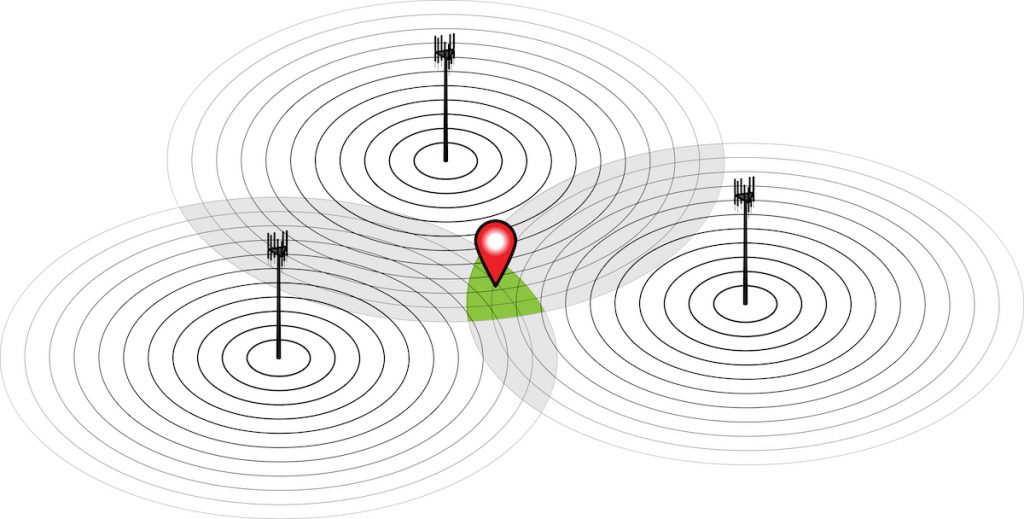
The World Health Organisation estimates that schizophrenia affects approximately 24 million people worldwide. That’s 1 in every 300 people. However, current treatments do not work for all those diagnosed, and it is reported that around a quarter of people remain ‘treatment resistant’ and require subsequent care (Osimo et al., 2023). It is thus vital that risk factors are identified to aid future diagnoses and treatment of those for whom current therapeutic methods are not working.
One such factor of increasing interest is inflammation. A large body of research has implicated inflammatory proteins, like C-reactive protein (CRP) and interleukin-6 (IL-6), in the pathogenesis (development) of psychosis (Goldsmith et al. 2016; Khandaker et al. 2015; Upthegrove et al. 2014). Genetic analyses have also shown that the association between inflammation and psychosis is causal and not only due to other confounding factors, like age or sex (Perry et al. 2021; Williams et al. 2022).
However, little is known about how these inflammatory proteins alter across different stages of the illness. This information is required to:
- Help distinguish disease onset from chronic illness
- Further our understanding of the mechanisms at play in schizophrenia
- Help devise effective strategies for the treatment, prevention, and prediction of psychosis.
Halstead and colleagues (2023) aimed to address these current gaps in the literature by performing the largest systematic review and meta-analysis in this field to date; separating patients by illness stage.

Inflammation has been implicated in the pathogenesis of psychosis.
Methods
Five scientific databases were systematically searched from inception to 31st March 2022 for studies comparing concentrations of blood-based inflammatory proteins in people diagnosed with schizophrenia-spectrum disorder (SSD) and healthy controls. All studies were also required to report the stage of illness for each patient, specifically whether the illness was acute or chronic.
Pairwise meta-analysis was conducted to pool evidence from each study and compare results between the SSD and the healthy comparison group. Network meta-analysis was also used to compare the concentrations of inflammatory proteins between the three groups of interest:
- Individuals with acute schizophrenia-spectrum disorder (SSD)
- Individuals with chronic SSD
- Individuals in the healthy comparison group.
This also meant that analyses could be run with larger sample sizes, which ultimately increased the statistical precision of the tests. Additional analyses were run to check whether any results found were simply due to differences in study quality or design.
Results
The authors screened 9,125 articles and 215 were found to be eligible for meta-analysis. This comprised 13,952 adults with diagnosed schizophrenia-spectrum disorder (SSD) and 10,969 healthy adult comparisons. Thirty-one inflammatory proteins were assessed.
The concentrations of a group of blood-based inflammation-related proteins (i.e., IL-1β, IL-1 receptor antagonist, soluble IL-2 receptor, IL-6, IL-8, IL-10, tumour necrosis factor-α, and CRP) were found to be increased in patients with diagnosed SSD as compared to the healthy comparison group.
Interestingly, the concentrations of a second group of markers were reported to differ between those with acute vs chronic SSD. Specifically, IL-2 and interferon (IFN)-𝛾 were elevated in those with acute illness, while lower levels of IL-4, IL-12, and IFN-𝛾 were reported in chronic illness.
Subsequent analyses confirmed that these findings were not due solely to poor study quality or differences in study design.

This review suggests that concentrations of blood-based inflammatory proteins differ in acute vs chronic schizophrenia.
Conclusions
The authors concluded that:
There is a distinct peripheral inflammatory signature of cytokines and associated proteins in people with schizophrenia-spectrum disorders, with different alteration patterns observed between acute and chronic stages of the illness.
This information may prove useful for illness subtyping and could ultimately foster the development of novel treatment or illness prevention techniques.

Identifying risk factors that differ per stage of psychosis may aid illness subtyping and foster the development of novel treatment or prevention techniques.
Strengths and limitations
This study is the largest systematic review and meta-analysis of inflammatory protein alterations in individuals with psychosis to date. The authors provide further support for previous findings implicating typical markers of inflammation, like CRP and IL-6 in patients with schizophrenia-spectrum disorder (SSD). Moreover, their work sheds light on a range of other, less often studied immunological markers that may be at play in schizophrenia and related disorders.
This is also the first study to consider immunological differences over the course of disease using network meta-analysis. This is a vital first step towards identifying factors that distinguish disease onset from its chronicity.
Additionally, the authors performed sensitivity analyses to check whether any results were simply due to differences in the quality or design of the included studies. It was confirmed that the results obtained were not due solely to poor study quality or differences in study design.
However, some limitations need to be acknowledged:
- Firstly, the authors limited their search to articles published in the English language only. This may have introduced some publication bias into the current study.
- Inflammatory proteins were identified using blood samples only, and so no conclusions can be made on whether these results are relevant to the central nervous system. Cerebrospinal fluid measures are needed for this purpose.
- Additionally, this study only included participants with diagnosed SSD and so, the results cannot be generalised to those at high risk for the illness.
- Lastly, the authors classify a complex biological condition into binary stages, i.e., chronic vs acute schizophrenia. This is quite a reductionist technique.
However, this research remains an important first towards understanding inflammatory profile variations in neuropsychiatric disorders across the life course.

This is the largest review of inflammatory protein alterations in individuals with psychosis to date and the first to consider differences over the course of disease.
Implications for practice
It is clear that inflammation plays a large role in the pathogenesis of schizophrenia. However, for immunopsychiatry research to begin benefiting patients, we need to identify reliable treatment targets that can then be subject to randomised controlled trials (Foley et al. 2023).
The current study has provided further support for the role of select inflammatory proteins in SDD and has implicated several others that may also be at play in the illness. Importantly, this study is the first to have identified stage-specific alterations, suggesting that factors predicting disease onset may differ from those predicting disease chronicity. This clarification of biomarker patterns may aid the identification of those more likely to develop chronic, ‘treatment-resistant’ psychosis and may facilitate the stratification of patients in future immunotherapy trials. Such stratification is vital if we are to avoid repeating null findings observed in previous immunopsychiatry trials of psychosis (Deakin et al. 2018).
Before trials can commence, however, evidence needs to be triangulated by using different methods to identify likely causal targets. Techniques like Mendelian Randomisation (MR) address unmeasured confounding and help determine the direction of associations identified. Further research using techniques like MR are needed to validate risk factors and to refine our choice of therapeutic target for trials.

Triangulation of evidence across methods is required to identify and validate likely causal targets before trials can begin.
Statement of interests
Éimear is an Elf Coordinator for The Mental Elf. She is also a PhD student funded by the Medical Research Council Integrative Epidemiology Unit Studentship. Her work focuses on further understanding the role of inflammation in psychiatric disorders. She was co-author of a commentary piece written for The Lancet Psychiatry on the primary paper discussed in this blog.
Links
Primary paper
Halstead, S., Siskind, D., Amft, M., et al. (2023). Alteration patterns of peripheral concentrations of cytokines and associated inflammatory proteins in acute and chronic stages of schizophrenia: a systematic review and network meta-analysis. The Lancet Psychiatry. 2023 10(4) 260-271
Other references
Osimo, E.F., Perry, B.I., Mallikarjun, et al. (2023). Predicting treatment resistance from first-episode psychosis using routinely collected clinical information. Nat. Mental Health. 2023 1 25–35
Goldsmith, D.R., Rapaport, M.H., Miller, B.J. (2016). A meta-analysis of blood cytokine network alterations in psychiatric patients: comparisons between schizophrenia, bipolar disorder and depression. Mol Psychiatry. 2016 21(12) 1696–1709
Khandaker, G.M., Cousins, L., Deakin, J., Lennox, B.R., Yolken, R., Jones, P.B. (2015). Inflammation and immunity in schizophrenia: implications for pathophysiology and treatment. The Lancet Psychiatry. 2015 2(3) 258–270
Upthegrove, R., Manzanares-Teson, N., Barnes, N.M. (2014). Cytokine function in medication-naive first episode psychosis: a systematic review and meta-analysis. Schizophr Res. 2014 155(1-3) 101–108
Perry, B.I., Upthegrove, R., Kappelmann, N., et al. (2021). Associations of immunological proteins/traits with schizophrenia, major depression and bipolar disorder: A bi-directional two-sample mendelian randomization study. Brain, Behavior, and Immunity. 2021 97 176–185
Williams, J.A., Burgess, S., Suckling, J., et al. (2022). Inflammation and Brain Structure in Schizophrenia and Other Neuropsychiatric Disorders: A Mendelian Randomization Study. JAMA Psychiatry. 2022 79(5) 498
Foley, É.M., Khandaker, G.M., (2023). Cytokines in psychosis: from mechanism towards treatment and prediction. The Lancet Psychiatry. 2023 10(4) 237-239
Deakin B, Suckling J, Barnes TRE, et al. (2018) The benefit of minocycline on negative symptoms of schizophrenia in patients with recent-onset psychosis (BeneMin): a randomised, double-blind, placebo-controlled trial. The Lancet Psychiatry 2018 5(11) 885–94
SINAPPS group webinar series ‘Inflammation and Psychosis: an update’: Professor Belinda Lennox https://www.youtube.com/watch?v=AZFX0NN_gQk
